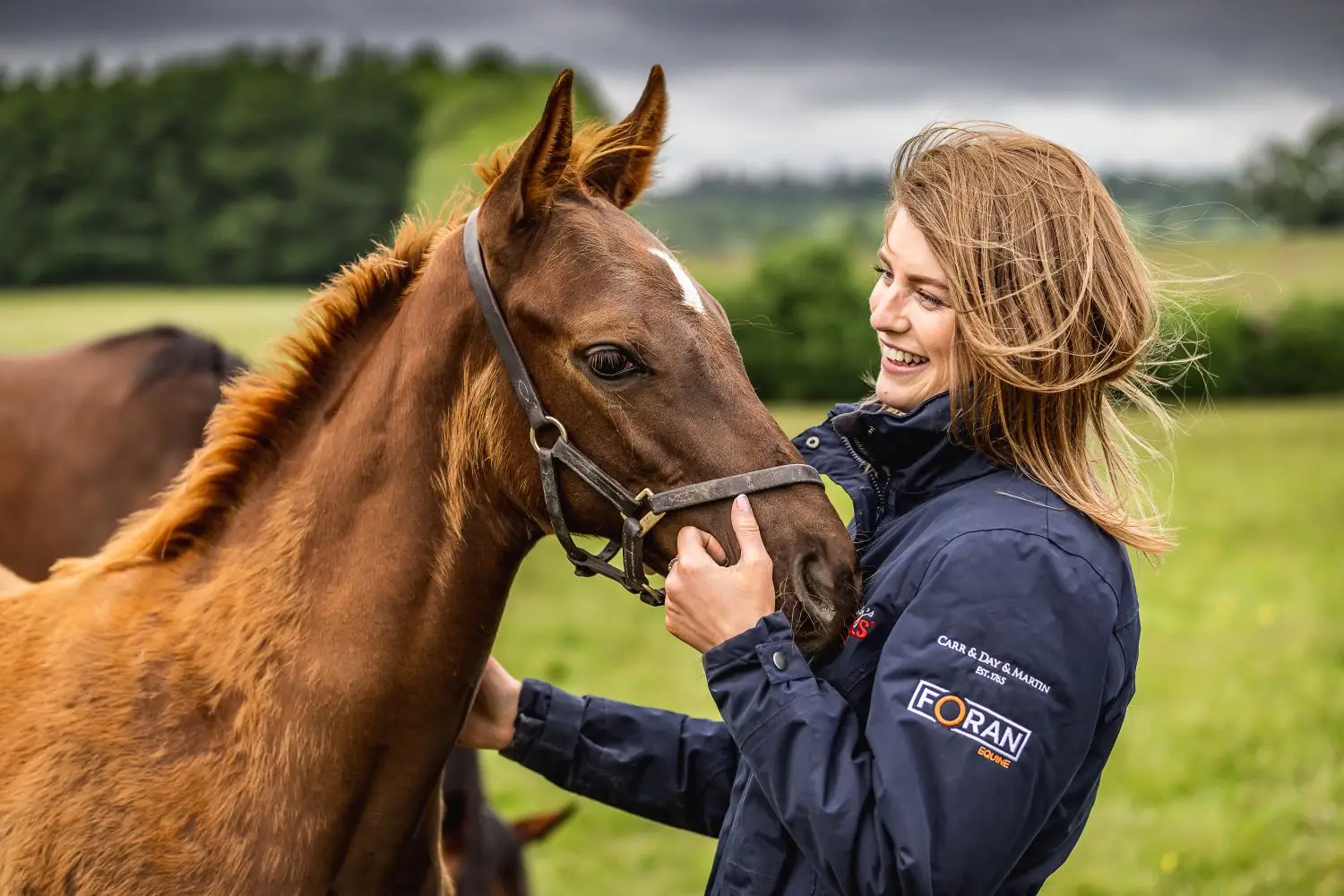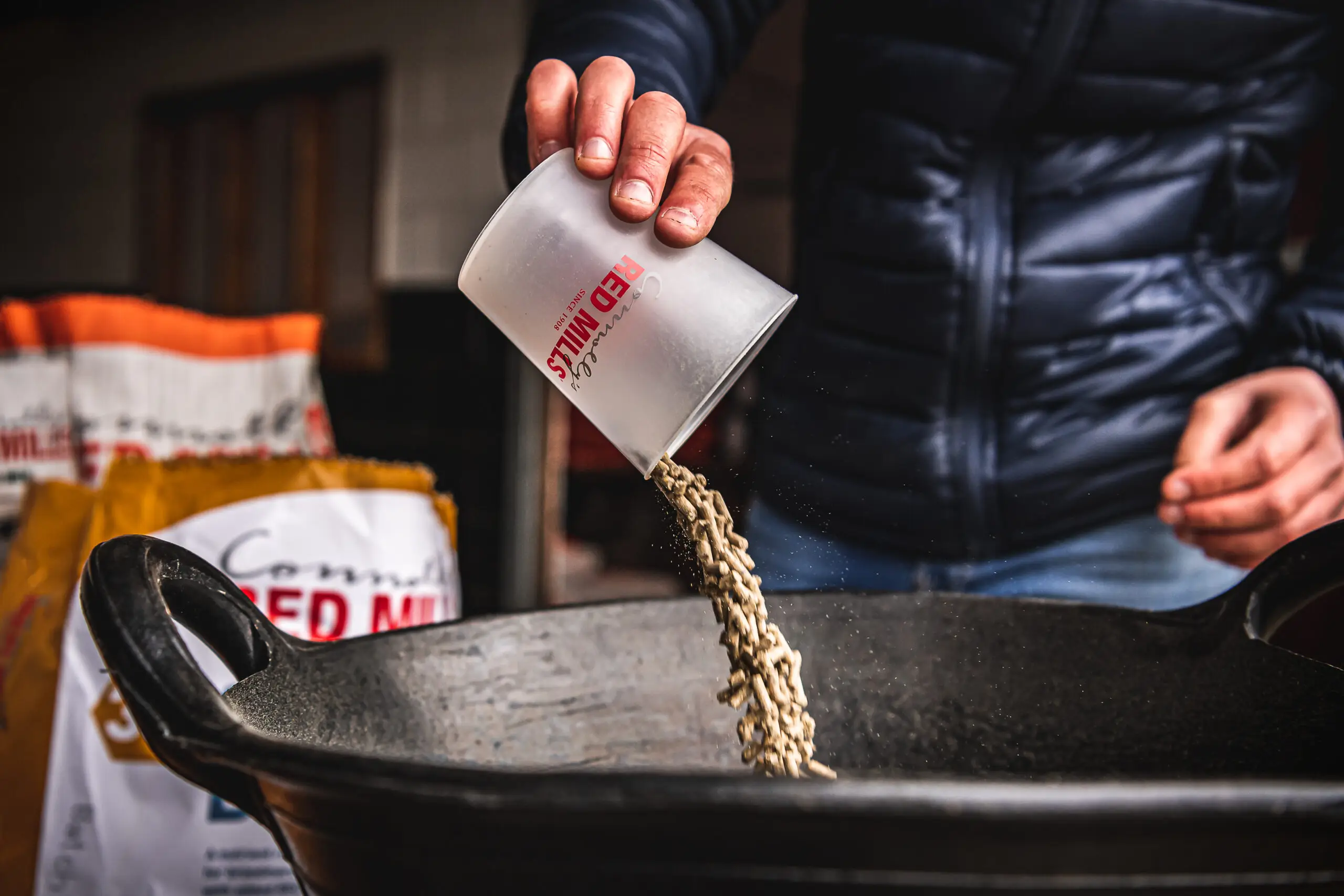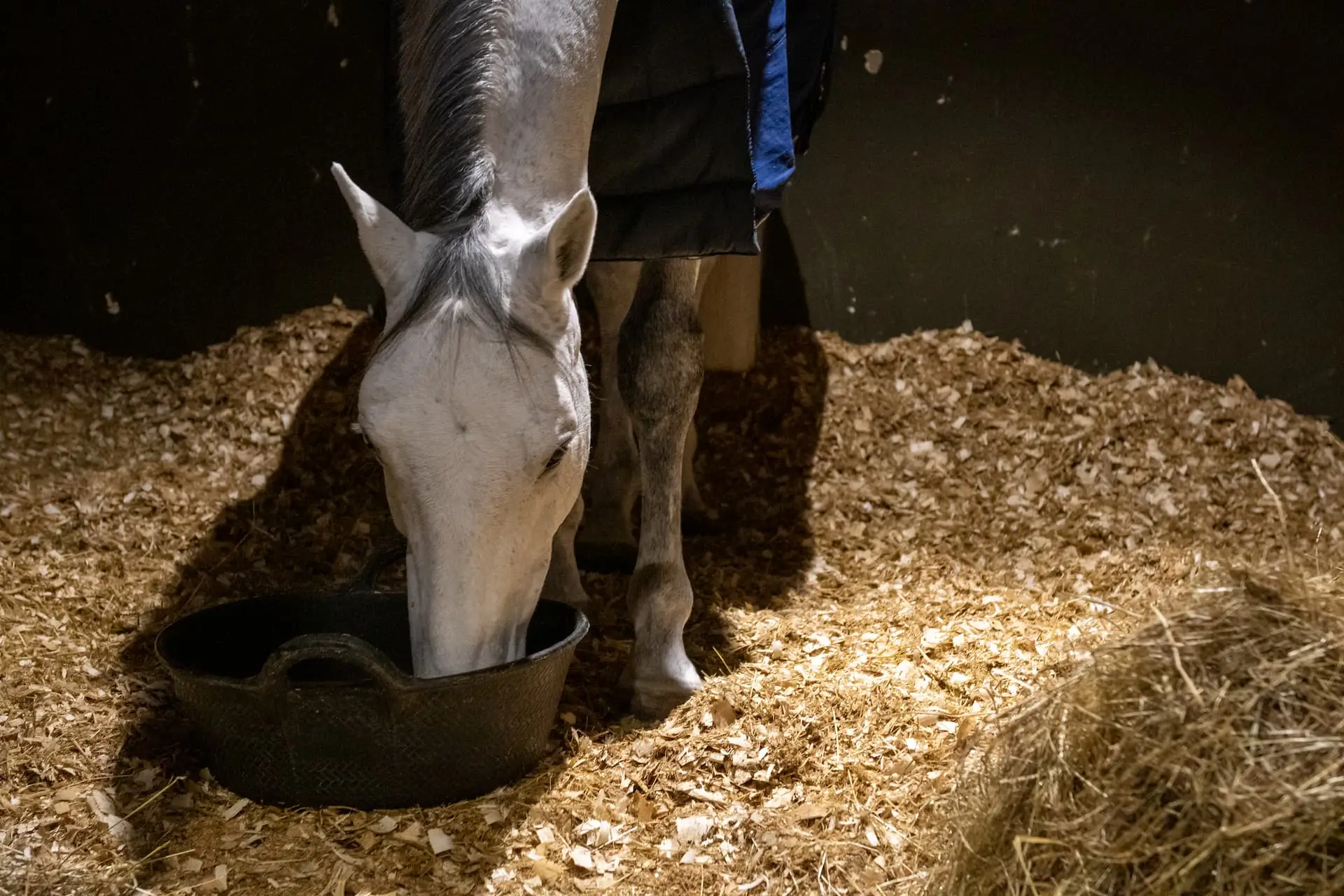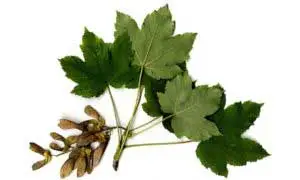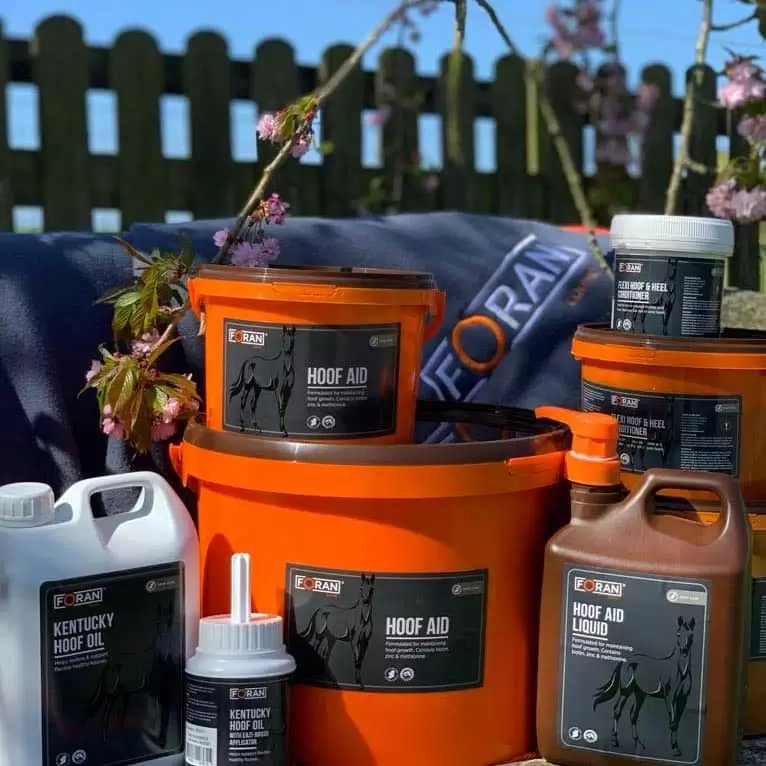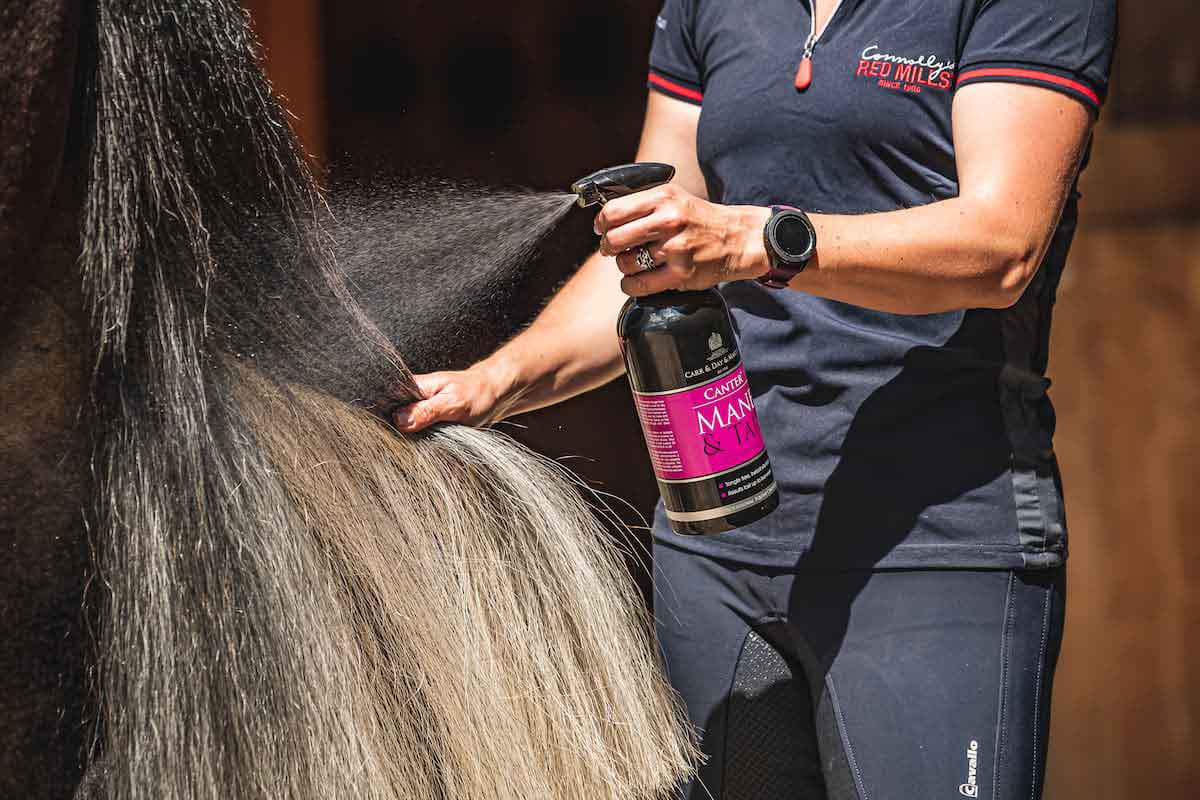Whether you have a pony prone to weight gain, a competition horse, or a young horse, there is a Connolly’s RED MILLS balancer to meet your horse’s needs. Horse Feed Balancers are suitable for all classes of horses and ponies and can be used in a number of different ways.
Horse Balancers can be Fed alongside Forage as a Low-Calorie Source of Protein, Vitamin & Minerals
Several of the modern horse breeds were developed to maintain weight on limited calories, even when they were asked to perform hard work. Many horses are easy keepers, meaning that they can survive on fewer calories. The main component of any horse’s diet should be forage such as grass, hay or haylage. Feeding at least 1.5% of the horse’s bodyweight per day as forage will help to maintain a healthy hindgut.


Connolly's RED MILLS Performa Care Balancer is a Low Starch, Cereal-Grain Free, Oat-Free, and High Protein Horse Balancer
Because of the concentrated nature and low feeding rate, a horse feed balancer can meet all the protein, vitamin, and mineral needs of the horse without adding excessive calories or starch to the diet. The carrier for a balancer pellet may have a few calories but is not calorie-dense like most other feeds formulated for a higher feeding rate – and designed to add calories to the diet.
For example, 500g of PerformaCare Balancer supplies less than 6 MJ/DE, this is less than would be provided by 1kg of late cut hay.
A Feed Balancer for a Horse can be Combined with Straights to Balance out Deficiencies in the Horse's Diet
Some people like to make up their own horse feed and incorporate straights such as oats, barley, maize, beet pulp, alfalfa chaff and oil. These are all great ingredients and will provide an excellent source of calories, but unfortunately, they are not nutritionally balanced by themselves. Horse Balancers such as RED MILLS Oat Balancer Mix and RED MILLS Oat Balancer Pellets can be used to supplement this type of a feeding programme, supplying essential amino acids, vitamins and minerals to ‘fill in nutritional gaps’.


Balancers can be Fed as a 'top-dress' for another Concentrate Feed to Enhance the Nutrient Density of the Horse's Overall Diet
In the case where a horse is already on a concentrate feed, the diet may benefit from additional high-quality protein and minerals and vitamins – top dressing the existing feed with a balancer will provide an elevated nutrient intake, ideal for horses in hard to intense work.
Horse feeds are formulated to be fed at a certain feeding rate. Some horses do not receive the recommended feeding rate because doing so would provide too many calories for the metabolism of that horse, and thus lead to excessive weight gain.
However, if a horse is fed less than the recommended feeding rate, they will not receive the appropriate levels of protein, vitamins, and minerals. For example, if a feed has a recommended feeding rate of 2 kg per day, but the horse is only getting 1 kg per day and maintaining weight well, then adding half the recommended level of a balancer pellet to the diet will help to raise the daily intake of vitamins, minerals, and protein concentration to meet the horse’s requirements.
Equine Balancers are a Good Option for Horses and Ponies Prone to Laminitis and other Diseases Requiring a Low Calorie Diet
Balancers are an ideal option for horses and ponies prone to laminitis that needing a low calorie, nutrient- dense diet. As balancers are fed in such small quantities, they help to control calorie intake and limit excessive weight gain, whilst at the same time provide all the nutrients needed to support health and wellbeing. Many balancers, including Connolly’s RED MILLS PerformaCare and GROCARE Balancer are specifically formulated to be cereal grain free and ultra-low in starch and sugar. This makes ideal for ‘good- doers’ that are prone to or suffering from laminitis or Cushing’s (PPID) or Equine Metabolic Syndrome. Find out more information on feeding the ‘good – doer’.


How does a Horse Feed Balancer Differ from a Vitamin or Mineral Supplement?
A horse feed balancer is a lot like a vitamin/mineral supplement but differs in the amount of protein and macro minerals that it adds to your horse’s diet. The balancer pellet supplies essential amino acids and adequate amounts of the macro minerals such as calcium, phosphorus, potassium and magnesium. Providing adequate amounts of these minerals is not possible when feeding a 50-100g of a vitamin and mineral supplement. These equine supplements generally supply micro minerals and vitamins but not protein or macro minerals.
Balancers for horses are formulated with high levels of vitamins and minerals in comparison to concentrate feeds. A typical feed might have 40-60 mg/kg copper while a balancer pellet would have 160-200 mg/kg – approximately four times the amount. The same holds true for the other minerals and vitamins included.
Some Balancers will Contain Extra ‘Beneficial Ingredients’.
Connolly’s RED MILLS PerformaCare and GROCARE Balancer contain:
- Added yeast to aid fibre digestion and support hind-gut health
- Two prebiotics, MOS and FOS, which help support gastrointestinal function by promoting ‘good’ bacteria in the hindgut.
- A long-lasting, natural gastric acid buffer to help maintain stomach health.
- A blend of dietary antioxidants, including vitamin E, selenium, and vitamin C, to support the immune system
- Elevated levels of biotin (15mg/kg), plus associated nutrients that promote hoof growth and strength.


Balancers are Available with a Range of Protein Levels to Suit the Horse's Requirements
Deciding on which balancer to use depends on its quality, the protein level in the forage, and the requirements of the horse. Protein for horses is an essential nutrient and horses need good quality protein for everything from muscle development, growth, milk production, hoof health, recovery, and repair to name but a few! The protein levels in horse feed balancers may appear to be quite high 25% and 30% in some cases – but remember the quantities of balancer fed will be small in comparison to feeding other concentrate feeds.
For example: Feeding 250g of Connolly’s RED MILLS PerformaCare or GROCARE Balancer provides 75g protein whereas 1kg of Connolly’s RED MILLS 10% Cool’n’Cooked provides 100g of protein. So, the ‘low protein horse feed’ actually provides more protein than the balancer.
Conclusion:
When a horse is receiving a fully balanced diet, all the nutrients needed for general health and well-being will be provided. A balanced diet will be reflected in your horse in many ways. A nutritionally balanced diet will contribute to a well-developed top line (in line with the appropriate exercise), healthy coat condition, strong healthy hooves, improved post-exercise recovery time, improved fertility, milk production, a healthier gut and better feed utilisation, and overall a much happier animal.
